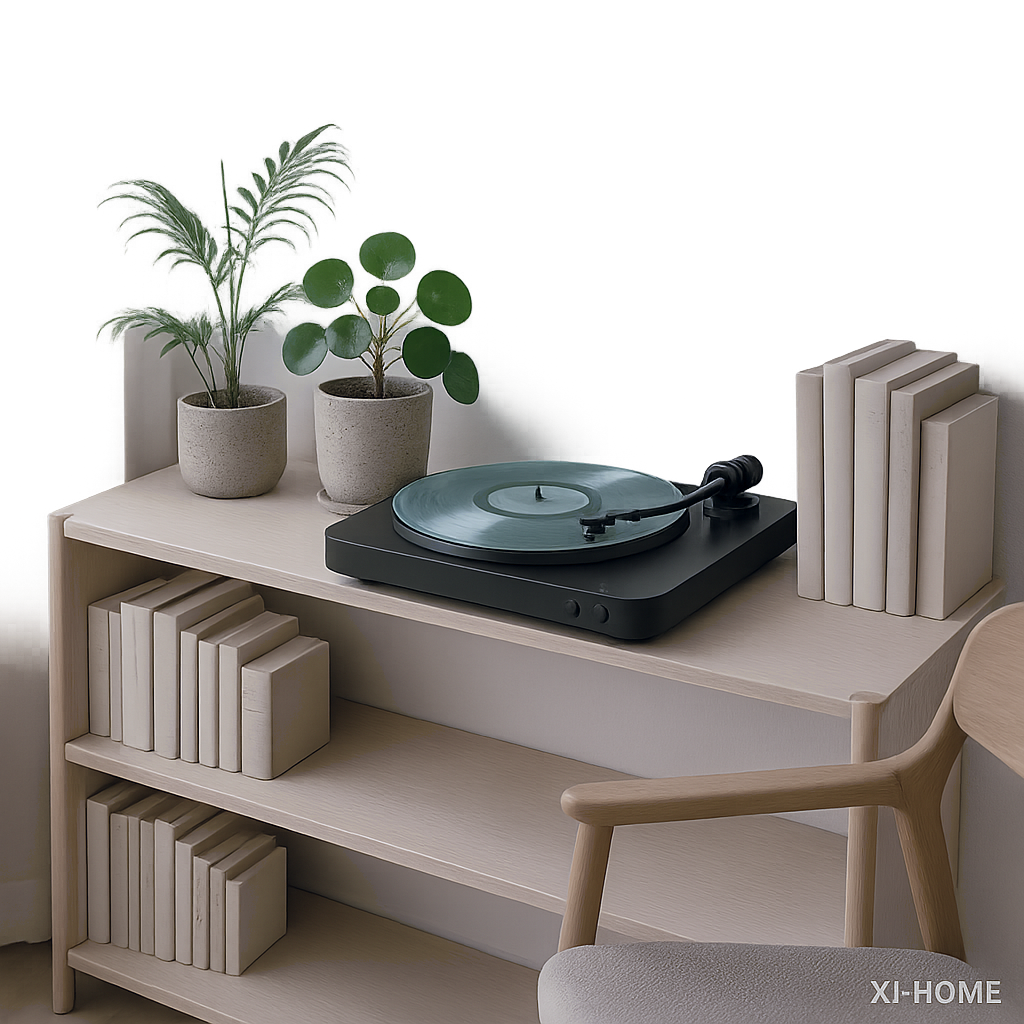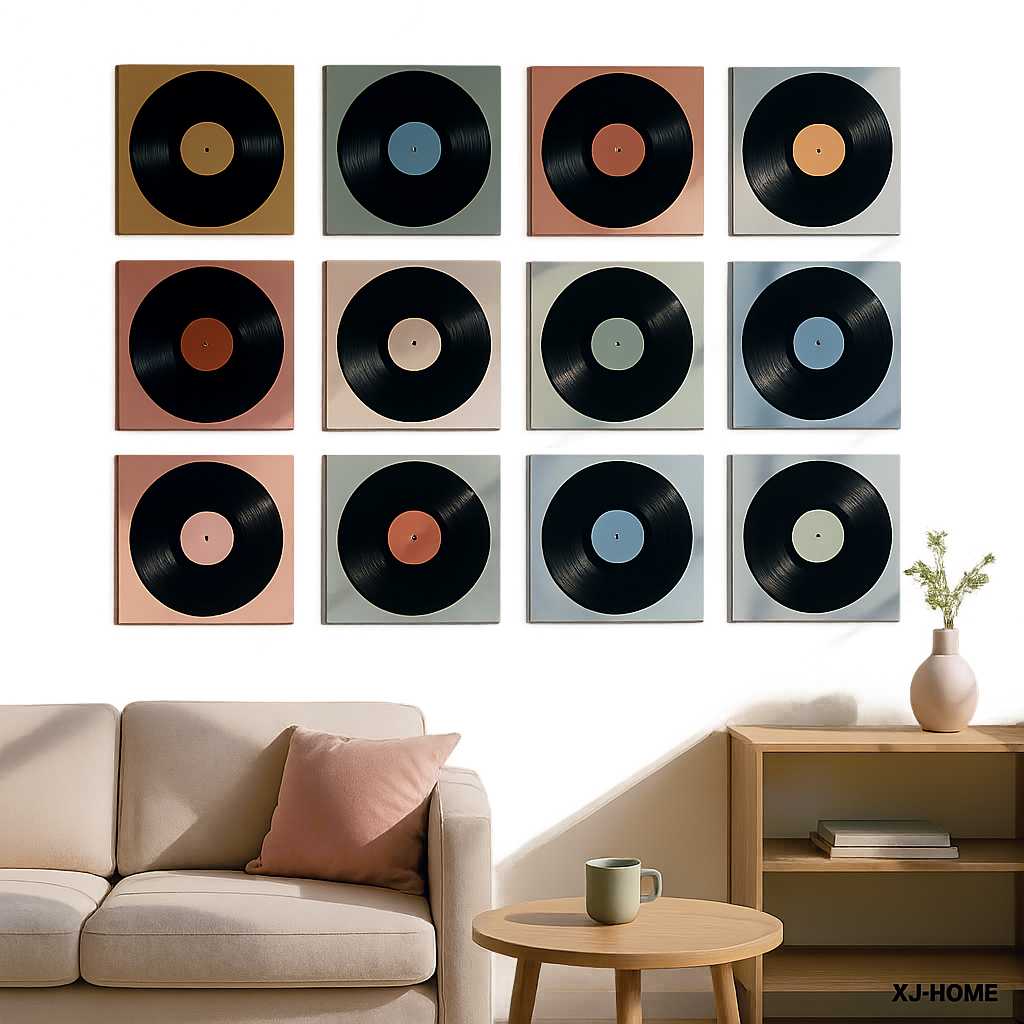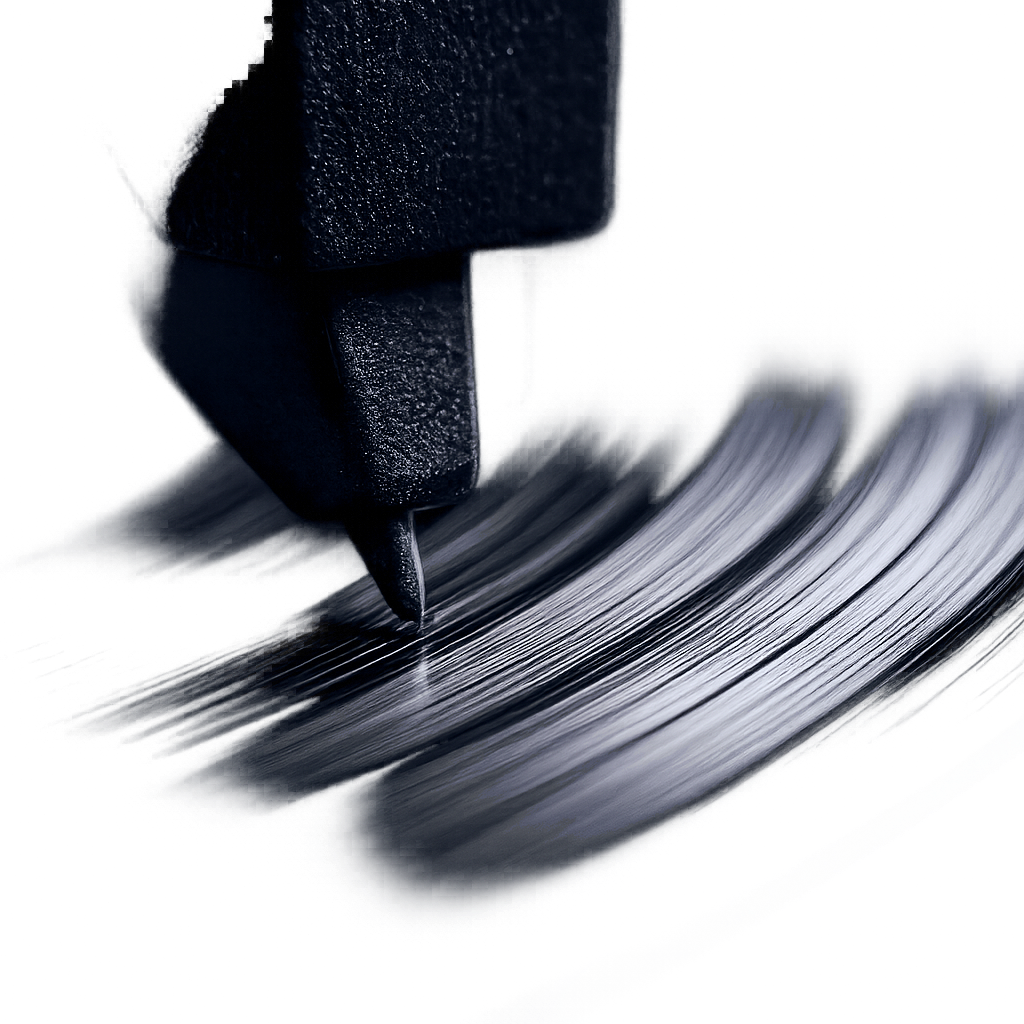In an age of fleeting digital convenience, there's a profound and growing allure to the tangible, the mechanical, the timeless. For the audio enthusiast, this often translates into a deep appreciation for vintage record players. These aren't just obsolete gadgets; they are monuments to an era of robust engineering, unique aesthetic sensibilities, and distinct sonic signatures. The act of restoring one of these classics is more than a hobby; it's an intimate dialogue with the past, a hands-on education in audio mechanics, and ultimately, the creation of a unique, personalized listening experience.
But why bother with dusty relics when shiny new turntables abound? Beyond mere nostalgia, vintage decks often possess a build quality and material integrity that many modern, mass-produced units can only dream of. They hail from a time when "built to last" was a genuine design ethos, not a marketing slogan. Furthermore, the restoration process itself—the meticulous cleaning, the patient troubleshooting, the thrill of hearing it sing again—offers a satisfaction that buying new simply cannot replicate. It's about breathing new life into something of enduring value, a philosophy we deeply cherish at XJ-HOME.
However, not all vintage turntables are created equal as restoration candidates. The ideal project combines historical significance, inherent quality, parts availability (or workarounds), and a community of fellow enthusiasts to share knowledge. Let's explore some iconic models that consistently reward the restorer's efforts.
Before You Dive In: Essential Considerations
Embarking on a vintage restoration requires a blend of enthusiasm and pragmatism.
-
Assess Your Skills: Be honest. Do you have basic mechanical aptitude? Are you comfortable with a soldering iron and multimeter? Some projects are more forgiving than others.
-
Parts are Paramount: This cannot be overstated. Before falling in love with a specific model, research the availability of critical parts: idler wheels, belts, styli, motor components, and specific electronic bits. Websites like VinylEngine (for manuals and forums) and AudioKarma are invaluable resources for this.
-
Know the Common Ailments: Every model has its quirks and typical failure points. Researching these beforehand can save you immense frustration.
-
Define Your Goal: Are you aiming for a museum-quality, historically accurate restoration, or a "restomod" incorporating modern upgrades for enhanced performance?
-
Gather Your Tools: A good set of hand tools, precision screwdrivers, a soldering station, a multimeter, appropriate lubricants (avoiding WD-40 like the plague!), cleaning agents, a strobe disc, and cartridge alignment tools are fundamental.
Titans of Torque: The Idler Wheel Legends
Idler wheel turntables, popular from the 1950s to the early 1970s, are revered for their powerful, dynamic sound, often described as having incredible "slam" and rhythmic drive. They are robustly built but require specific attention.
1. Garrard 301 & 401
-
The Legend: British broadcasting icons, these turntables are legendary for their build quality and authoritative sound. The 301 (grease bearing or later oil bearing) and the slightly more refined 401 are highly coveted.
-
Why Restore?: Their motors are incredibly durable, and the core mechanics are straightforward. A well-restored Garrard can compete with, and often surpass, very expensive modern turntables.
-
Common Restoration Tasks:
-
Motor Service: Disassembly, cleaning, lubrication of motor bearings.
-
Idler Wheel: Replacement or re-surfacing of the rubber idler wheel is crucial for quiet operation and speed stability.
-
Plinth: This is non-negotiable. The original Garrard plinths were often rudimentary. A massive, well-damped plinth is essential to unlock their sonic potential. This is often a DIY project in itself or can be sourced from specialists.
-
Tonearm: Original tonearms are often best replaced with a modern or a higher-quality vintage arm.
-
Linkages and Controls: Cleaning and lubricating the speed change mechanism.
-
-
Challenge Level: Moderate to Advanced, primarily due to the plinth requirement and potential tonearm upgrades.
2. Thorens TD-124
-
The Swiss Masterpiece: A marvel of Swiss precision engineering, the TD-124 (and its successor, the MkII) features a unique belt/idler hybrid drive system. It's renowned for its musicality, detail, and beautiful aesthetics.
-
Why Restore?: It's an audiophile icon. Properly restored, it delivers a captivating performance that blends idler drive authority with a certain refinement.
-
Common Restoration Tasks:
-
Motor Service: Similar to the Garrard, the E50 motor needs careful cleaning and lubrication.
-
Belt Replacement: The short belt driving the stepped pulley is a critical component.
-
Idler Wheel Care: Ensuring the idler wheel is clean, supple, and makes good contact.
-
Mushroom Grommets: Replacement of the rubber suspension grommets for the chassis is vital for isolation.
-
Main Bearing: Cleaning and inspection of the main platter bearing.
-
Plinth: Like the Garrards, a substantial plinth significantly enhances performance.
-
-
Challenge Level: Moderate to Advanced. Its complexity is a bit higher than the Garrards.
Belt-Drive Beauties: Smooth Operators
Belt-drive turntables rose to prominence offering better isolation from motor noise compared to many idler designs of their day. Many classic belt-drives offer excellent performance and are highly "tweakable."
3. AR Turntable (XA and XB Models)
-
The American Classic: Edgar Villchur's Acoustic Research XA (and later XB) turntable was revolutionary for its simplicity, elegance, and surprisingly high performance for its price in the 1960s. It introduced the suspended sub-chassis design to a wider audience.
-
Why Restore?: It's a fantastic entry point into vintage restoration. Its design is minimalist, parts are relatively available (or workarounds exist), and the sonic rewards are significant.
-
Common Restoration Tasks:
-
Suspension Tuning: Replacing hardened rubber grommets and ensuring the three-point spring suspension is correctly adjusted for a proper "bounce."
-
Belt Replacement: Essential for speed accuracy.
-
Motor Lubrication: The Haydon motor often just needs cleaning and fresh oil.
-
Tonearm Care: The simple tonearm often benefits from rewiring, and the headshell contacts may need cleaning. Some enthusiasts modify or replace the arm entirely.
-
Plinth Refinishing: The wooden plinths are often prime candidates for cosmetic restoration.
-
-
Challenge Level: Beginner to Moderate. A very satisfying project.
4. Thorens TD-150 & TD-160 Series
-
The European Standard: These models (and their many variants like the TD-165, TD-166) took the suspended sub-chassis concept further and became benchmarks for affordable audiophile performance in the 1970s. The Linn LP12, in fact, owes a significant design debt to the TD-150.
-
Why Restore?: They offer a superb balance of musicality, tweakability, and classic aesthetics. A well-set-up TD-160 can be astonishingly good.
-
Common Restoration Tasks:
-
Suspension Tuning: Like the AR, getting the springs and grommets right is key.
-
New Belt: A must.
-
Main Bearing: Cleaning, inspecting, and re-lubricating the main platter bearing.
-
Motor Care: Ensuring the motor is quiet and runs smoothly. Some models may benefit from an external power supply.
-
Plinth Upgrades: While the stock plinths are decent, more rigid or mass-loaded plinths can improve performance.
-
Tonearm: The stock TP16 (and variants) tonearms are decent, but rewiring or upgrading to a different arm (like an SME 3009, Rega RB250/300) is a popular modification.
-
-
Challenge Level: Moderate. More involved than the AR XA but very well-documented.
Direct-Drive Dynamos: Precision and Power
While the Technics SL-1200 is the direct-drive DJ icon, many excellent vintage direct-drive turntables were designed for home audiophile use and offer superb restoration potential.
5. Dual 701 & 721
-
German Engineering Excellence: Dual produced some outstanding turntables, and their early direct-drive models featuring the EDS-1000 motor (like the 701 and fully-automatic 721) are exceptional.
-
Why Restore?: These motors are incredibly smooth, quiet, and speed-stable. The overall build quality is typically excellent.
-
Common Restoration Tasks:
-
Electronics: Recapping the power supply and motor control board is often necessary as electrolytic capacitors age.
-
"Steuerpimpel": This tiny plastic/rubber stud is crucial for the automatic functions on models like the 721 and often disintegrates. Replacements are available.
-
Motor Lubrication: Though robust, the motor bearings appreciate fresh lubrication.
-
VTA Mechanism: On models with adjustable VTA, ensuring the mechanism is clean and operates smoothly.
-
Cartridge Alignment: Dual's ULM (Ultra Low Mass) tonearms often work best with specific high-compliance cartridges.
-
-
Challenge Level: Moderate. The electronics can be a bit daunting for beginners, but the mechanical aspects are well-engineered.
6. Pioneer PL-Series (e.g., PL-518, PL-530, PL-570)
-
Japanese Reliability: During the 1970s, Pioneer produced a wide range of direct-drive turntables that offered excellent performance and reliability. Models like the PL-518 (manual), PL-530 (fully automatic with a great motor), and the higher-end PL-570 are fine examples.
-
Why Restore?: They are generally very well-built with robust motors and good tonearms for their price class. They can deliver a very satisfying, stable performance.
-
Common Restoration Tasks:
-
Speed Control Potentiometers: These can become dirty or oxidized, leading to speed instability. Cleaning with DeoxIT or replacement is common.
-
Electrolytic Capacitors: As with any vintage electronics, recapping the power supply and control boards is good preventative maintenance.
-
Veneer/Cosmetics: Many had wood-grain vinyl veneer that might be peeling or damaged; some higher models had real wood veneer worth restoring.
-
Automatic Mechanisms: For fully automatic models, cleaning and re-lubricating the complex linkages.
-
Feet: The original rubber feet often degrade and may need replacement for proper isolation.
-
-
Challenge Level: Moderate. Generally quite serviceable.
The Restoration Ethos: A Labor of Love
Restoring a vintage turntable is a journey of discovery. The key is patience, meticulous research (service manuals are your best friend!), and a methodical approach.
-
Clean Everything: Start by thoroughly cleaning all mechanical parts. Old, hardened grease and accumulated grime are often the primary culprits for malfunctions.
-
Mechanical First: Address the platter bearing, motor, idler wheel or belt, and any linkages or automatic mechanisms.
-
Electronics Next: Focus on power supplies first. Aged capacitors are the most common electronic failure point. Inspect solder joints.
-
Tonearm and Cartridge: Ensure tonearm bearings are smooth and free of play. Proper cartridge alignment and setup are critical for optimal sound. Investing in good alignment tools, like those you might find exploring resources on https://xenonjade.com, pays dividends.
-
Test Incrementally: Don't try to fix everything at once. Address one system, test it, then move to the next.
The Sweet Sound of Success
The rewards of vintage turntable restoration extend far beyond just having a working record player. There's an immense sense of accomplishment in understanding and reviving a complex piece of machinery. You gain a unique piece of audio history, often with a sonic character and build quality that's hard to find today without spending a small fortune. More importantly, you forge a deeper connection to your music and the technology that brings it to life.
So, if you feel the call of the vintage, don't hesitate. Choose your project wisely, arm yourself with knowledge, and prepare for a truly rewarding endeavor. The groove you save may be your own.





Leave a comment
All comments are moderated before being published.
This site is protected by hCaptcha and the hCaptcha Privacy Policy and Terms of Service apply.